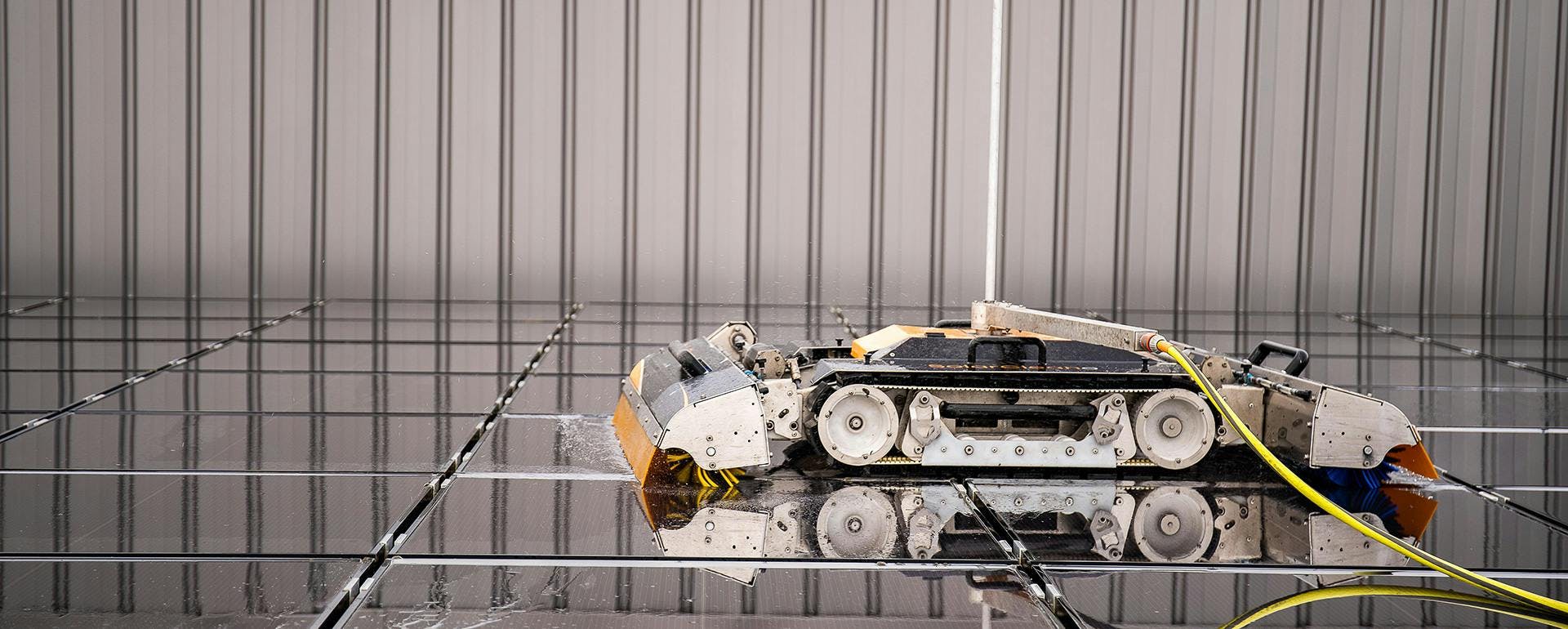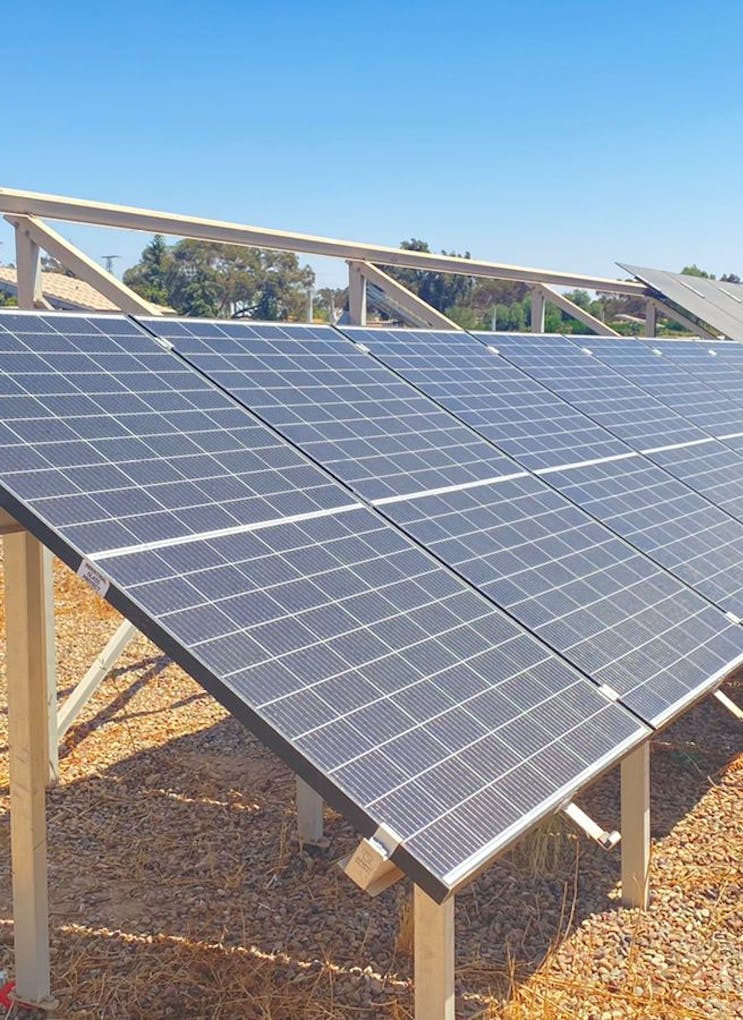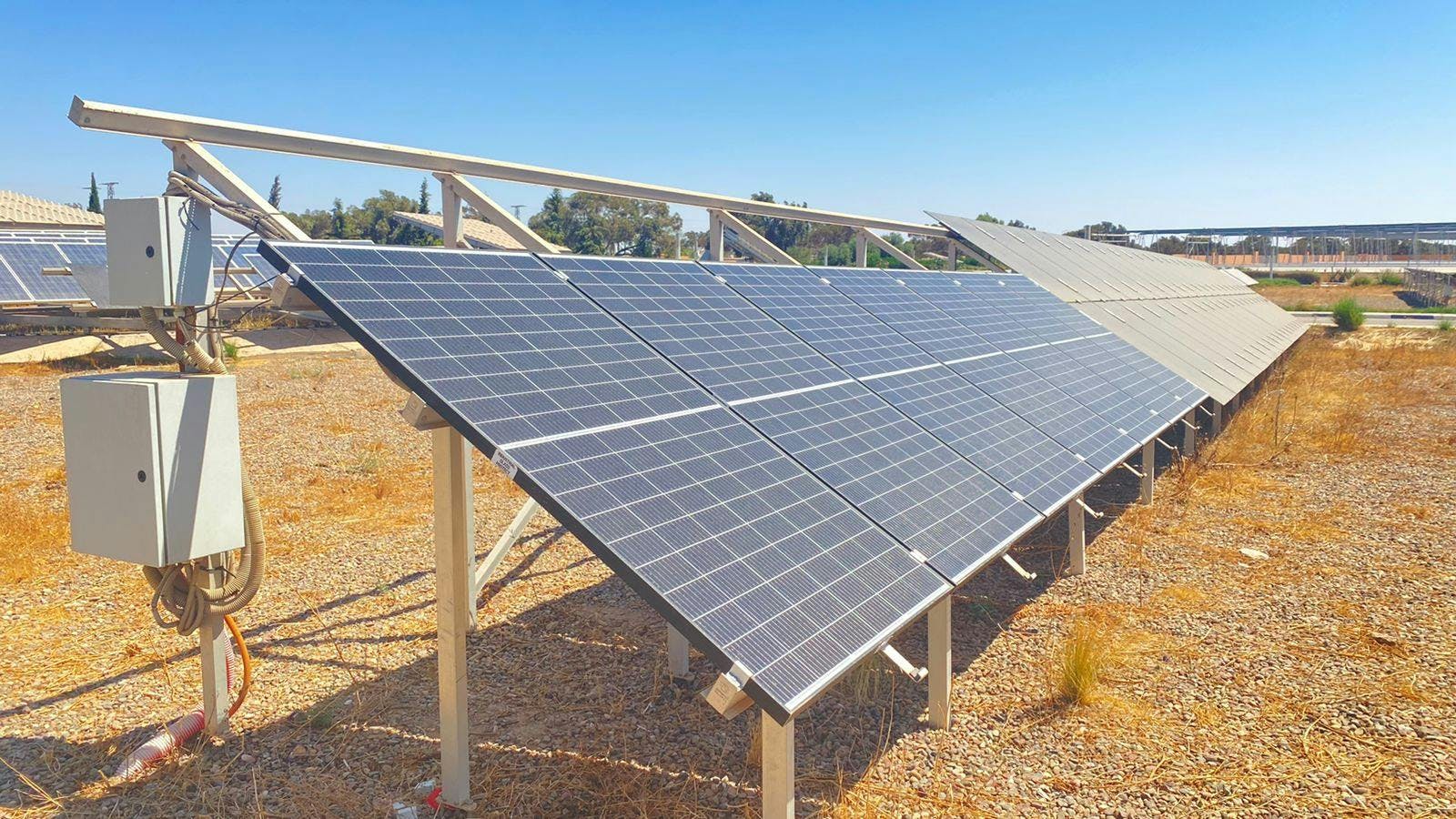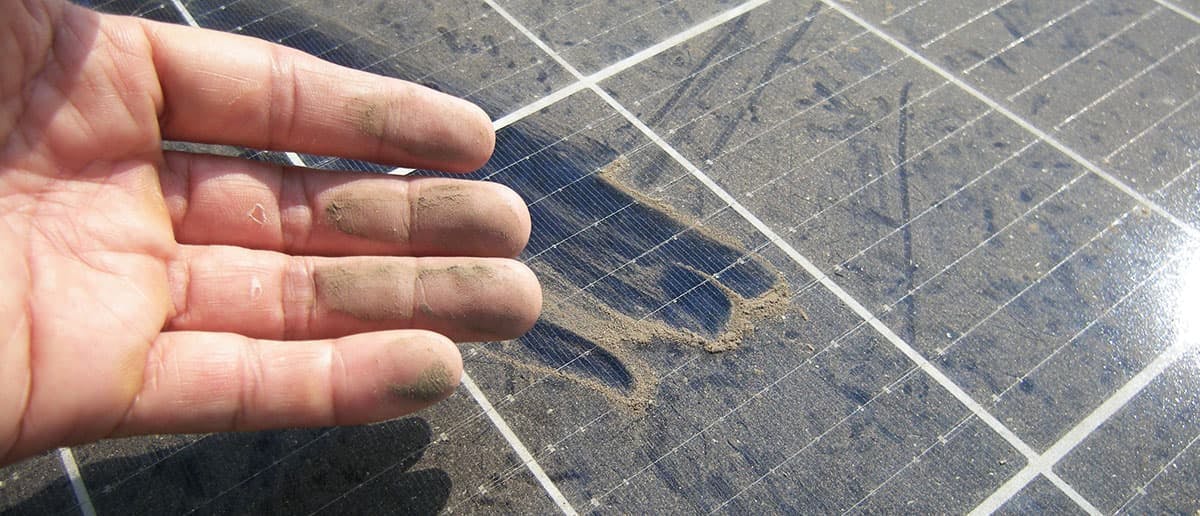R. Dr. Francisco Sá Carneiro
Zona Industrial de Bouro - Letra C
4740-010 Esposende, Portugal
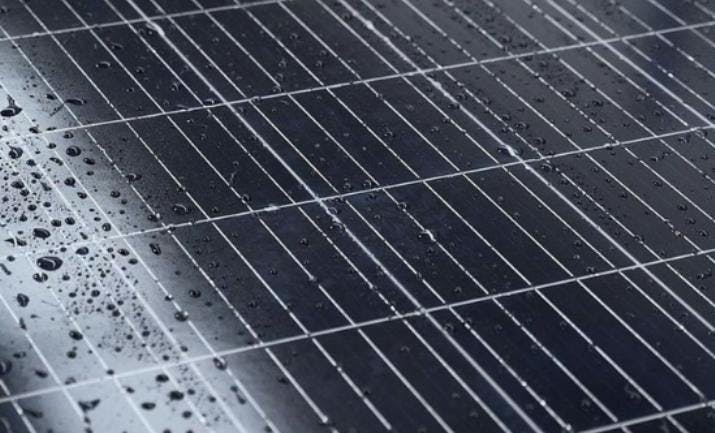
What the Top 10 Largest Solar Module Manufacturers Say about PV cleaning
In an age where solar technology continues to evolve, it is crucial to ensure the optimal performance and longevity of solar panels, which are at the heart of every solar energy system. A key aspect of solar panels’ maintenance lies in the cleaning guidelines adopted by manufacturers worldwide.
Solar panel manufacturers, motivated by their commitment to efficiency and environmental responsibility, have provided guidelines for the maintenance of their solar modules. In this article, we analyze the main recommendations for the cleaning operations presented by the top 10 of the largest solar panel manufacturers in the World - Longi, Jinko Solar, Trina Solar, JA Solar, Canadian Solar, Risen Energy, Astronergy, First Solar, DMEGC Solar, QCells - clarifying the best practices that contribute to extending the useful life, not voiding the warranty and ensuring the safety of the equipment.
Common Industry Guidelines
Among the recurring themes in the guidelines of leading solar panel manufacturers are the critical effects of dust accumulation on solar panels. The solar panels, can accumulate dust over time, resulting in reduced power output and, in more extreme cases, the formation of hot spots. These hot spots can impact the overall efficiency and integrity of the panel, emphasizing the need for regular cleaning.
However, the frequency of cleaning is influenced by the rate of dust accumulation. Some of the manufacturers mention that in certain cases rain can play a role in the natural cleaning of solar panels, but they also point out that each case must be analyzed individually. In cases of more persistent or difficult soiling, cleanings should be done more frequently and with the appropriate solutions so as not to affect the performance of the modules. The best approach is to discuss the case with professionals in the field of solar cleaning and maintenance so as not to lose the efficiency of the modules.
Next, we will consolidate a selection of frequently encountered recommendations in maintenance manuals and go through some of the fundamental concepts they present.
Main Warnings
Warnings | # manufacturers out of 10 | |
|---|---|---|
Mandatory professional cleaning | 04 | |
Clear warning that improper cleaning voids the modules' warranty | 04 | |
Dry cleaning not recommended/prohibited | 03 | |
No high-pressure cleaning | 03 | |
Prohibition on the use of scrapers | 06 |
When it comes to maintaining the optimal performance and longevity of your solar panels, proper cleaning procedures are essential. Some of the World's leading solar panel manufacturers emphasize the importance of adhering to professional cleaning services. Incorrect cleaning practices not only risk diminishing your panels' performance but also have the potential to void the manufacturer's warranty.
All of the aforementioned manufacturers advocate for professional cleaning to ensure that the delicate solar panels are handled with care with 4 of them mandating that the cleaning must be done by professionals. Trained personnel with in-depth knowledge of the risks associated with cleaning, dealing with some of the contaminants presents on the panels and handling electrical components should be solely responsible for maintaining and cleaning solar modules, as First Solar states[1].
QCells also mention that “module cleaning has to be done by qualified personnel according to the state of the art and taking into account all relevant safety issues and general product properties”.[2] Trina Solar, DMEGC, and Canadian Solar converge on the criticality of employing correct cleaning techniques to safeguard warranty coverage. Damages resulting from inappropriate cleaning procedures, such as scraping or rubbing the surface when dry, can void the warranty, as highlighted by the manufacturers and they forbid the use of scrapers. This guideline is essential to prevent potential micro-scratches on the glass surface. Canadian Solar reiterates that improper dry-cleaning methods leading to module damage will also void their warranty.[3]
Another aspect that the manufacturers mention is the use of high-pressure washing systems, as some of the companies warn against using.
Canadian Solar recommends a maximum water pressure of 4 MPa (40 bar) while Risen Energy, per example specifies that the water pressure on the glass surface should not exceed 700 Kpa (7 bar) during pressure washing[4]. It's imperative to note that each manufacturer has its own pressure limits which, as you can see, can be quite different, so it is very important to read the manufacturers' manuals for the modules you are looking to clean.
Main Recommendations
Recommendations | # manufacturers out of 10 | |
|---|---|---|
Preferential cleaning at the beginning or end of the day | 09 | |
Pre-inspect the modules before cleaning | 05 | |
Wear suitable protection | 05 | |
No submersion of modules in water | 04 |
9 of 10 manufacturers emphasize the importance of selecting the right time for cleaning. For instance, companies as LONGi “suggests cleaning the modules during early morning or evening with low irradiance and low modules temperature especially for the hot regions.”[5], the specification of this point is to minimize the potential risks of electrical shock and thermal shock. The consensus among most manufacturers leans towards advocating for cleaning at the beginning or end of the day, so you can see that this is a key point to follow in order to clean properly and avoid losing your warranty.
Among the main principles of cleaning solar modules, two stand out: conducting a thorough pre-inspection and wear suitable protective gear (PPE). The manufacturers agree on the need for a thorough pre-inspection before cleaning. Checking for cracks, damage, exposed wires and loose connections is crucial to identifying any potential problems that could be aggravated during the cleaning process and which could lead to system failure or danger to the cleaner. If any of those problems are found, they must be solved before any cleaning. Notably, manufacturers also strongly discourage casting shadows over the module surface under any circumstances to avoid the risk of hotspots. The PV plant owner should be warned of any persistent shadow affecting their plant.
Prior to this pre-inspection and initiating the cleaning process, it is essential to wear suitable protection, “Trained personnel shall wear appropriate electrically insulating Personal Protective Equipment (PPE) during cleaning, inspection operations, or when working near modules.” Says First Solar on his manual and also DMEGC refer to the importance of “Wear suitable protection (clothes, insulated gloves, etc.) on the cleaning process.[6] Furthermore, manufacturers unanimously highlight the adverse consequences of submerging modules in water. Submersion can pose risks to the electrical components of the panels and should be avoided at all costs.
Water and Cleaning Agents Limitations
Limitation | # manufacturers out of 10 | |
|---|---|---|
Use of soft water | 06 | |
No abrasive detergents | 05 | |
Use of environmentally friendly detergents and/or detergents approved by the manufacturer | 09 |
In this final group we combine two controversial topics: the use of a cleaning agent, or not, and the type of water.
The main solar panel manufacturers, such as Jinko Solar, Longi, Trina Solar, First Solar, etc., offer valuable information on the type of water to use as well as the use of detergents.
With regard to the use of water, most manufacturers refer to the use of soft water as a reference. For example Jinko advises against the use of water with high mineral content, as it may leave undesirable deposits on the glass surface of the panels. It is recommended to opt for neutral water with a pH value ranging from 6.5 to 8.5 when cleaning the glass. This approach ensures that the glass coating layer remains intact and undamaged.[7]
Canadian solar recommends “water with low mineral content or near neutral pH water”[8]. Another manufacturer that details very well the type of water to be used is First Solar: “When using water, RO water provides the best results. When RO water is not available, tap water with low mineral content (total hardness < 1500 mg/L) may be used to clean the modules.”
The use of suitable water helps to optimize cleaning, as well as to ensure that cleaning is carried out properly and without future problems such as limescale deposits on the modules.
First Solar also refers to a very important aspect in its instructions: the difference between the temperature of the water and the temperature of the modules. They point out that: “Water temperature must be < 20°C from module temperature applied with water pressure < 35 bar (500 psi) at nozzle.” [9] This is very important so that you don't have problems with micro cracks in the solar glass, or any problem that could interfere with the glass and the good working condition of the panel.
Now for the most controversial part: the use or not of detergents to clean the solar modules! Some manufacturers say yes, others say no. The large majority prohibits strong acids and solvents. In detergents, however, there are different recommendations, but most manufacturers, 9 out of 10, say that environmentally friendly detergents approved by them can be used.
Trina underscores the importance of using environmentally friendly cleaning agents with caution if grease is present on the panels.[10] Furthermore, Canadian Solar and DMEGC specify that only substances explicitly approved by the manufacturer should be utilized for cleaning modules: “Do not use cleaning corrosive solutions containing hydrofluoric acid, alkali, acetone, or industrial alcohol. Only substances explicitly approved by Canadian Solar are allowed to be used for cleaning modules.”.
By avoiding abrasive detergents and adhering to approved substances, you safeguard the integrity of your panels' surfaces. In line with responsible and eco-conscious practices, both Trina and First Solar recommend the use of environmentally friendly cleaning agents.
The importance of manufacturer approval
As mentioned above, compliance with the guidelines is imperative for professionals in the sector, but certain points can be complex and open to interpretation, and the warranty remains a very sensitive issue for those who buy or handle PV panels.
In such cases, endorsements from leading manufacturers, such as letters of conformity, are crucial for professionals and companies.
Recognition by manufacturers becomes a guarantee, ensuring that, by following all the defined guidelines and using an approved cleaning agent, the warranty will remain intact. The certainty of preserving the panel's warranty brings comfort not only to the cleaning and maintenance specialists, but also to the owners of solar plants and residential installations.
Reinforcing the Industry Commitment: ChemiTek Solar's Conformity letters
ChemiTek's dedication to the industry and to meeting the standards set by manufacturers is exemplified by the 15 letters of conformity ChemiTek holds from the World's largest photovoltaic panel manufacturers.
These letters of conformity recognize that ChemiTek products meet the strict requirements stipulated by these companies, so that they can be used without interfering with the modules' warranty. Some of these letters, for example, recognize that ChemiTek's cleaning solutions, such as the CRA, are not only approved for use on PV modules, but they are specifically intended for cases where traditional cleaning methods fall short, mostly in severe cases. When dust or stains mark the front surface of PV modules, leading to severe hot spots and substantial power degradation, ChemiTek's solutions like SWP step in to effectively mitigate these issues.
The fusion of innovation, exhaustive testing, and conformity letters positions ChemiTek as an industry leader that empowers solar owners and operators to achieve exceptional results.
The Future
In the realm of PV panel maintenance, it is clear that various manufacturers employ distinct approaches, yielding a diverse range of guidelines. However, amidst this diversity, there exists a harmonious convergence on key practices. The consensus on using soft water, conducting cleaning during specific times of the day, and opting for manufacturer-approved detergents underscores the industry's commitment to preserving panel integrity and performance.
While these shared principles provide a foundation, it is clear that there is still progress to be made in terms of guideline clarity and comprehensiveness. The variability in the information on the manuals shows the need for an ongoing effort to enhance user understanding. Striving for improved clarity in instructions is essential to empower users and maintenance teams to make informed decisions regarding panel care.
In the search for clearer and more specific guidelines for the management of cleaning and maintenance for the solar industry, cooperation between solar panel manufacturers and entities such as O&M teams, solar plant owners and specialists in solutions for the solar industry is very important. This cooperation will allow the optimization and simplification of the cleaning operations, leading to progress and the creation of efficient solutions. Working together for better optimization and management of the solar industry, underpinned by excellence!
Do you have any suggestions or topics about the solar universe you would like to read here? Reach us by email!
